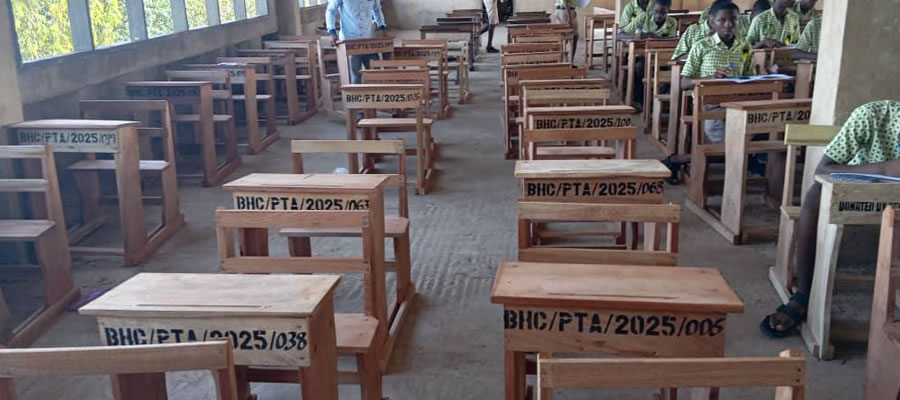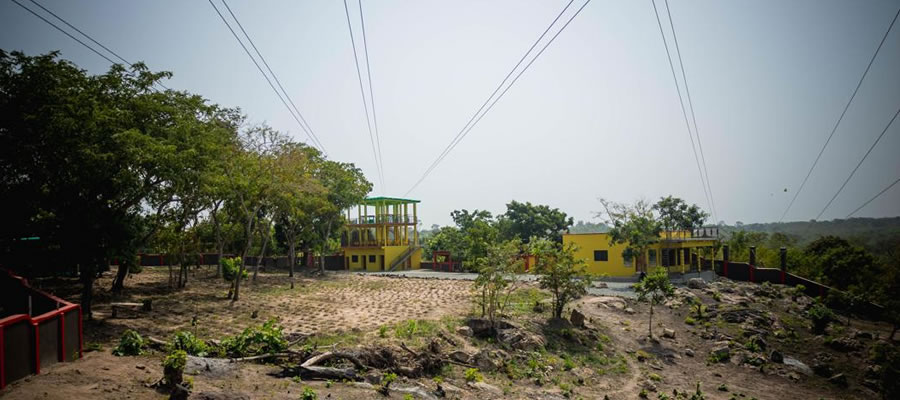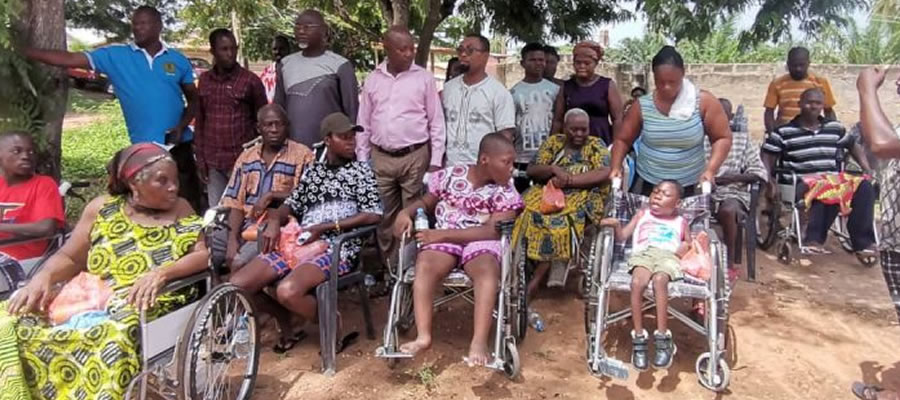

location and size
Kpando Municipality is located in the Volta Region of Ghana and it is one of the oldest in the country. The Municipality lies within Latitudes 6° 20’ N and 7° 05’ N, and Longitude 0° 17’ E. It shares boundaries with Biakoye District in the North, Afajato South to the East and North Dayi District in the South. The Volta Lake, which stretches over 80km of the coastal line, demarcates the western boundary. The Municipality covers approximately a total land area of 820 square kilometers representing 4.5% of the Volta Region with almost 30% of the land submerged by the Volta Lake. Kpando, the Municipal capital, is about 70km from Ho, the Regional Capital. The location of the Municipality places it at a strategic position with potential for fast economic growth and development.
Topology and drainage
Topography
The mean annual temperature is about 27° Celsius, whereas the daily means ranges from, 22° to 33° Celsius. The months of February and March are generally the hottest while July and August are relatively cooler. The average relative humidity is 80%.
The most conspicuous physical features of the Municipality are the Akwapim-Togo-Attakora Ranges which is located at the eastern corridor between Ho and Kpando Municipalities. The highest point in the Municipality is about 381 meters and is located along the Volta Lake. There are outcrops of some special clay located in Kpando, Gbefi and in Kudzra, which can support pottery, brick and tile production.
Drainage
The Volta Lake and the River Dayi are the major water bodies that drain the Municipality. There are however other numerous streams and rivulets that flow throughout the Municipality but these are perennial.
The Volta Lake runs virtually along the whole of the Western boundary while the River Dayi is to the East with its basin providing a prime farming land for the cultivation of a variety of tropical food crops and vegetables. The presence of these water bodies are great potentials for irrigation development, which can support all year round farming, thus creating employment opportunities. The lake is also a big potential for the design of a water supply scheme to many communities faced with access to good water. The tourism and the fishing industries are the other areas where the lake can be harnessed to the benefit of the entire population.
Climate and vegetation
Climate
The Municipality falls within the tropical zone and is generally influenced by the South West Monsoon winds from the South Atlantic Ocean and the dry Harmattan winds from the Sahara. The Municipality experiences Two (2) rainy seasons. The major one occurs from mid April to early July and the minor from September to November. The beginning and the end of the rainy seasons are not very distinct and there is sometime rainfall even during the dry periods. The average annual rainfall ranges from 900mm to 1,300mm with considerable variations in the time of onset, duration and intensity over the years.
Vegetation
The vegetation of the Municipality is a mix of Guinea Savannah Woodlands and Semi-Deciduous Forests. The Savannah Woodlands consist of grass with scattered trees like Acacia, Bamboo and Baobabs. These are located along the River Dayi basin. The Semi-Deciduous Forests are located on the slopes of the Akwapim –Togo – Attakora Ranges with many tree species, which are also found in high forest zones such as, Antiaris Toxicaria (Odum) and oil palm. Much of the forest has however been lost to the menace of inappropriate farming practices, excessive lumbering and bush fires. To restore the forest, the FORUM project by the German NGO helped some communities in the Municipality in reforestation. These are the Kpando ranges (Dayi and West Block) and Kpando Plantation Forest Reserve. These reserves cover about 4% of the total area of the municipality.
Geology and soil
Mineral Resources
The Municipality is relatively endowed with mineral deposits, which can be exploited to transform the Municipal economic base. Unfortunately, the Municipality lacks the type of technology and resources for harnessing these giant economic potential. There are large deposits of clay at Kpando, Gbefi and Kudzra with different colour stations suitable for the development of brick, tile, pottery and a ceramics industry. This when fully exploited and developed will generate employment for the youth in the Municipality.
Date Created : 11/29/2017 3:27:40 AM











 facebook
facebook
 twitter
twitter
 Youtube
Youtube
 +233 593 831 280
+233 593 831 280 0800 430 430
0800 430 430 GPS: GE-231-4383
GPS: GE-231-4383 info@ghanadistricts.com
info@ghanadistricts.com Box GP1044, Accra, Ghana
Box GP1044, Accra, Ghana